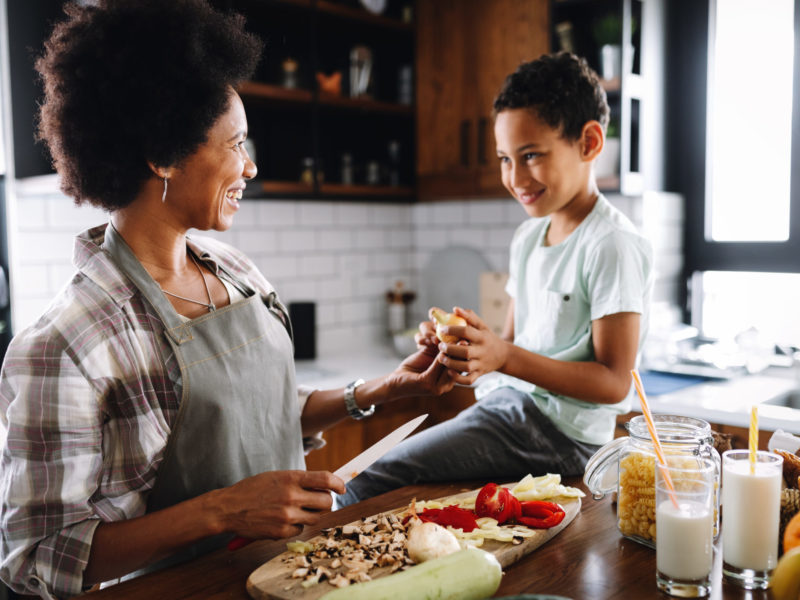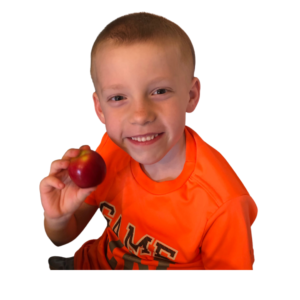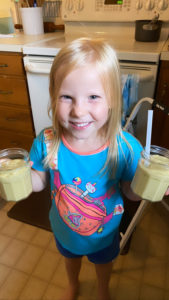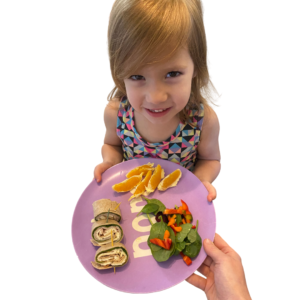Ten years ago, I started to fight for my health. Having no idea why it was declining so quickly, I knew I needed to treat my food and exercise as medicine. Now, I use what I’ve learned to teach my kids how to make healthy food choices.
It Started With A Question:
“Is this choice going to serve my body, or work against it?”
The answers were usually simple. Now though, understanding why has evolved into a deeper knowledge and passion for teaching others how to shift their approach toward building health. If everyone would just ask themselves this question before their choices around food, they would immediately unlock the potential for progress.
What’s better? Ask your kids.
Tough, but doable
Kids are a sensitive and difficult area when it comes to healthy foods. They have limited ability with a developing mind to understand much past immediate gratification when they’re young. Also, it’s often hard to know how to communicate in a way that has impact without giving so much detail that we lose their attention. To check out those who have helped me, see Kids Eat in Color, Paleo Running Momma, and Against All Grain.
What I hope to do is encourage you in that there are ways to involve kids in conversations around healthy food choices. Having 3 kids (ages 8, 5 & 3), I have had success (and, of course, failures) in not only teaching them about better choices but instead, having them be excited about their healthy choice.
Here’s what I’ve seen work:
1. Meal Plan
Meal plan for the upcoming week and have each kid pick a meal that they’d like added to the menu. When they pick a meal that is healthy, celebrate that by saying, “oooh, I really like that choice! I also really like broccoli with (fill in the blank). When they choose something that doesn’t serve our bodies as well, also celebrate their choice, but say something a little different like, “Pizza sounds great for our fun meal this week. What can we add to it to make sure our bodies are getting what they need?”
2. Teach Their Bodies To Like Healthy Foods
Kids tend to eat what they enjoy first, and then leave what they don’t. In our home, what I cook for dinner is what we’re having, and the kids are expected to at least try their food. We ask them to eat the healthiest part of the meal first. This helps in two ways;
- They eat it, it’s done, and then they can focus on enjoying the rest of the meal.
- They aren’t filling their bellies with other things making it more difficult to eat whatever it is they don’t like because their starting to feel full.
If kids start with the healthiest food on their plate, there is a better chance of them consuming a proper and healthy portion of that food.
Now, my daughter celebrates when she eats her least favorite part first. We celebrate with her. I believe teaching their bodies to like foods that serve them is something worth some dinner time struggles. Kid’s bodies can, and will, learn to enjoy foods that are healthy for them. Their bodies will also learn when they are deficient in a certain nutrient and crave foods appropriately. It’s definitely worth the time investment.
 3. Shop & Cook Together
3. Shop & Cook Together
Allowing our kids to help plan, shop for, and make healthy meals, can bring them a sense of purpose. When they are involved in the kitchen, and we celebrate them “making” a meal, the chances of them enjoying that meal increase, simply out of pride!
4. Be the example
When you make snacks or healthy meals for yourself, model the choices you want your kids to make. My kids ask me all the time, “What is that?”, “Why does it look like that?”, “Can I have a taste?”
 5. Ask a lot of “What do you think?” questions
5. Ask a lot of “What do you think?” questions
Especially now, COVID-19 has given us a new platform for conversation. When our kids ask why they can’t have dessert every night after dinner, we explain the way sugar acts in our body (in a reasonable way) and how that makes it harder to fight illness.
With us being back to school and work, it’s important that eat in a way to make our bodies healthy and strong. Kids, most of the time, want to be healthy and strong when emotional connections with food haven’t been developed. Further, kids want their parents to be proud of them, so when they recognize moments that will ignite celebration, they’ll make them more often.
A Family’s Wellness Journey
I think in many ways, these principles can be applied to a lot of areas of parenting. I am no expert, and definitely have a lot to learn! I have, however, seen these principles work first hand!
For example:
When we tell our kids no around certain foods, there is no longer a fight.
When they don’t want to finish their dinners, we negotiate a common ground. They often ask, “If I eat my veggies, can I be done?” Of course. We also want them to stop eating when they feel satiated ????
In the end, it’s a process. Each child is unique and how they learn will be different. While it’s hard work, it’s also massively rewarding.
About the Author
Amanda Haile is a Nutrition & Fitness enthusiast with 8 years experience. She coaches others on building health from the inside out and uses her own experience battling hidden disease to teach people that their environment (mental, physical & emotional) has greater influence on their health than they may understand. Her signature style is to teach people how to take baby steps toward health, so that changes stay exciting, are manageable and sustainable. Feel healthier and more confident so that you’re living a life of health, joy, and happiness that will bleed into your success and relationships. You can follow her on Instagram at @amanda.m.haile
Interested in eating more healthy for life?
Listen to our friends over at Wellness Force Radio to learn about the “5 Must Have Nutrition Fundamentals”



 3. Shop & Cook Together
3. Shop & Cook Together 5. Ask a lot of “What do you think?” questions
5. Ask a lot of “What do you think?” questions






 7 Things That Make Kratom Products An Underrated Health Supplements
7 Things That Make Kratom Products An Underrated Health Supplements
Interesting stuff to read. Keep it up.
AMA-zing blog Amanda :)